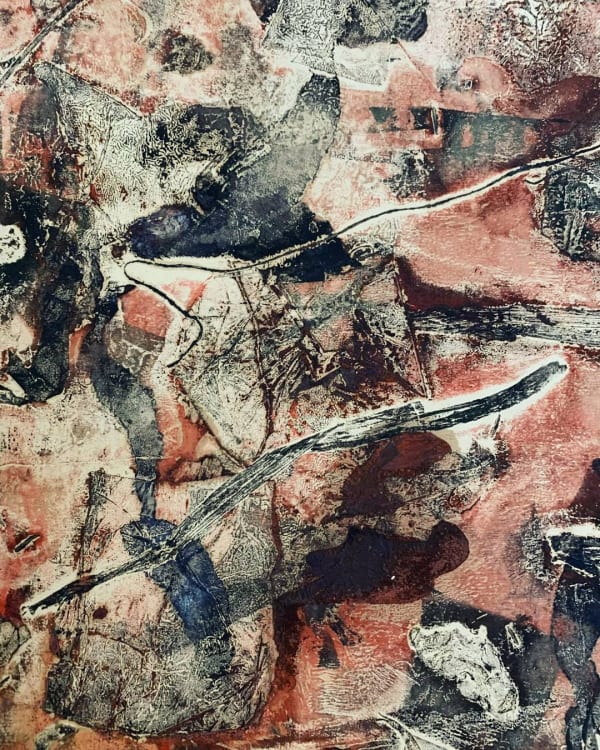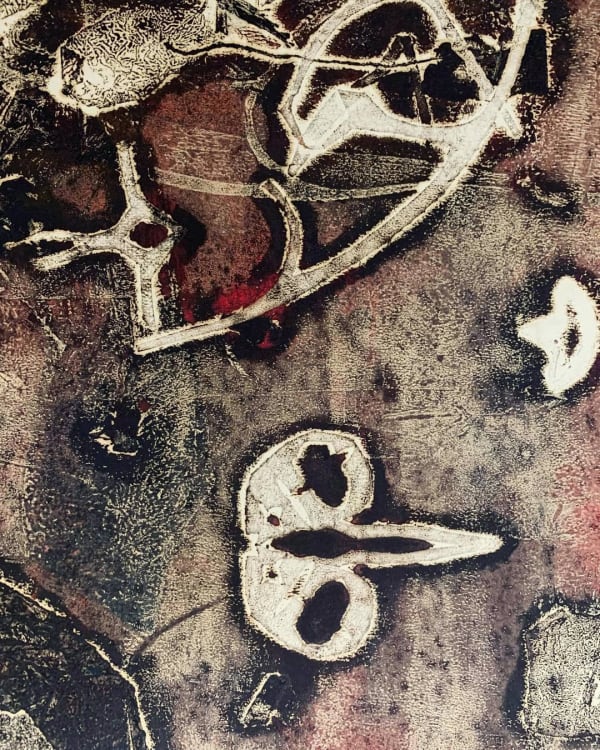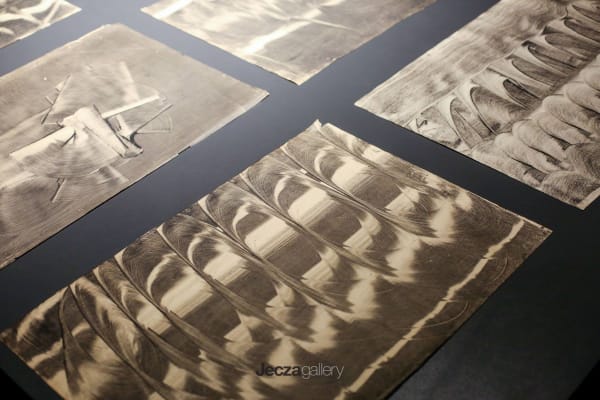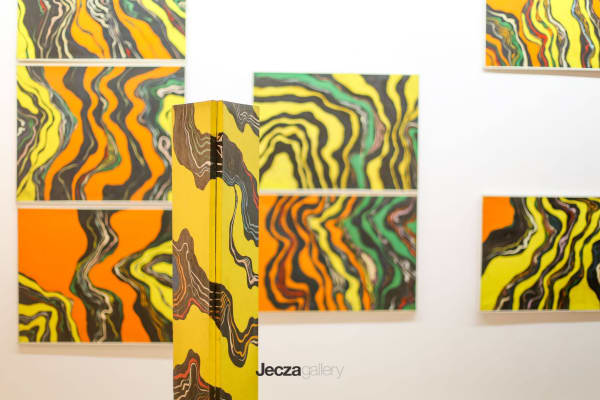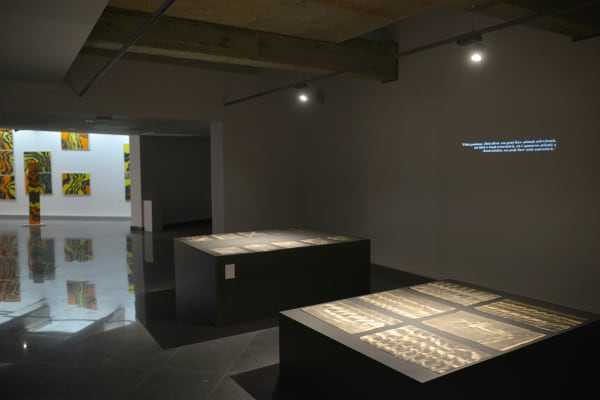1965-1975 by Ciprian Radovan
Ciprian RADOVAN (born in 1939), painter, art critic, one of the major artists of Timisoara.
Since 1962 he has participated in over 300 exhibitions, including: UAP Timisoara annual exhibitions, national exhibitions (paintings, graphics), group exhibitions and representative exhibitions of the Timisoara Branch; in the country and abroad.
The Ciprian Radovan – 1965-1975 exhibition explores a well-determined moment of the nonfigurative elaborated by Ciprian Radovan, when the two-dimensional took the form of a large installation with an ambient character.Named by the artist “pshihocroma”, this integrative installation generates a variable chromatic-optical perception depending on the viewer’s position.
Exhibition 1965 - 1975 is part of the process undertaken by the JECZA Gallery to recover the innovative practices approached by artists from Timișoara in the 1960s to 1980s, a period during which Timișoara experimented with art forms that would modify the field of Romanian visual arts.
The exhibition retraces the path of two significant moments in the artist's work: the first "exploits a well-defined moment of non-figurative art elaborated by Ciprian Radovan when the departure from the two-dimensional took the form of an extensive installation with an environmental character. Named by the artist as 'psychochromatic ambiance,' this integrative installation generated a variable chromatic-optical perception depending on the viewer's position. It was initially presented in April 1973 at the Helios Gallery in Timișoara, and then in August 1973 at the Apollo Gallery in Bucharest, marking a premiere in Romanian art" (Maria Orosan-Telea).
In parallel, the exhibition proposes, for the first time after more than 50 years, the formal exercises and experiments that the artist went through in the period from 1966 to 1968, realized using the monotype technique. Using glass or soap layer as a support, these explorations probed means of expression beyond the limits of painting, a preferred medium of expression for the artist. Bearing witness to the manifest concerns also present in the works of other artists of the generation, such as Roman Cotoșman or Paul Neagu, the monotype exercise left a distinct mark on that period, showcasing the extensive artistic searches attempted by the artists of that generation. The informal monotypes from 1966 were preselected for the Young Artists' Biennial in Paris, while those from 1968, characterized by a visible gestural nature, were neither exhibited during the time of their creation nor in other retrospective exhibitions.
Introductory text to the exhibition: Maria Orosan-Telea.
The informal was an aspect of Ciprian Radovan’s painting, on which the artist returned in clear periods during his career for almost sixty years. Alternating with various other stages in which the figuration, the descriptive or the ornamental has found its privileged place in its preoccupations, abstraction represented either a form of escape from real, surrealistic and lyrical, or a method of organising the three dimensional and pictural space derived from Op art.

